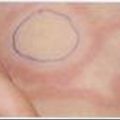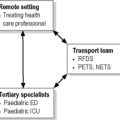21.1 General approach to poisoning
Introduction and epidemiology
In 2009, the NSW Poisons Information Centre received in excess of 50 000 calls from around Australia regarding paediatric exposures to pharmaceuticals, chemicals, plants and animals. There is a bimodal distribution in the frequency of exposures, with the larger peak occurring in the toddler age group (ages 1–3 years) and a much smaller peak in the mid to late teens. The latter peak relates to deliberate self-poisoning in adolescents. Over eighty percent of poisons centre calls relating to childhood exposures are advised to stay at home as no acute management is necessary. Pharmaceuticals are by far the commonest exposure in children as per American Poison Control Center data. The top ten unintentional exposures in children (under the age of 18 years) reported to Australian Poisons Information Centres are listed in Table 21.1.1. It is important to note that paracetamol is present in many preparations as well as in combination products (e.g. with codeine, pseudoephedrine, doxylamine, dextromethorphan).
Diagnosis
Important elements of the focused history include:
Children may also present with a cluster of symptoms and signs suggestive of poisoning, i.e. a toxidrome. Although most cases do not manifest the full spectrum of signs and symptoms, pattern recognition amongst clinicians may provide a clue to diagnosis. Toxidromes and corresponding causative agents commonly seen in children are listed in Table 21.1.2.
Pseudoephedrine
Caffeine
Hypertension
Mydriasis
Sweating
Agitation
Delirium
Fever
Hyoscine
Antihistamines
Plants
Mushrooms
Mydriasis
Loss of visual accommodation
Flushed skin
Dry skin/mouth/eyes
Fever
Delirium
Tramadol
Clonidine
Respiratory depression
Hypotension
Miosis
Carbamates
Coma
Seizures
Excess secretions (DUMBELS)
Weakness
Fasciculations
Cyclic antidepressants
Opiates
Tramadol
Lithium
MDMA (ecstasy)
Hyperreflexia
Hypertonia
Tremor
Clonus
Diaphoresis
Fever
SSRI, selective serotonin reuptake inhibitor.
Risk assessment
Following the history and examination of the potentially poisoned child, the clinician must undertake a risk assessment of the likely exposure and probable course of toxicity, if any. This requires knowledge of the toxicodynamics and kinetics of the agents, an understanding of potential complications and experience with previous similar cases. At this stage, it is prudent to obtain advice from expert clinicians in paediatric toxicology, such as through the Australasian Poisons Information Centres (Australia: 13 11 26; New Zealand: 0800 764 766). These centres are available 24/7 and provide expert advice on the assessment and management of poisoning in children. The majority of paediatric exposures do not present to hospital, and even those that do, require observation only. However, there are a few highly toxic pharmaceuticals and chemicals that, even in small doses, can cause severe toxicity. Patients exposed to these select few agents may require close monitoring and potentially aggressive resuscitation – these are discussed in Chapter 21.2.
Investigations
The vast majority of children exposed to a substance require no investigations at all. There are some instances where a specific agent is ingested and a specific investigation may aid diagnosis and/or management. Screening tests in the poisoned child should be performed based on the risk assessment. Specific investigations, which may be invasive or time-consuming to return a result, should be discussed with an expert toxicologist prior to embarking on these tests. Table 21.1.3 summarises the potential indications for screening and specific investigations in paediatric poisoning. Baseline blood investigations (blood counts, electrolytes, renal function test) should be performed if any of the screening or specific laboratory investigations are ordered.
Deliberate self-poisoning
All exposures to insulin or oral hypoglycaemic agents
Altered mental status (delirium, psychosis, coma)
Haemodynamic instability or shock
Poisoning with specific agents:
Poisoning with specific agents:
Known or suspected aspiration pneumonitis
Tube (e.g. endotracheal, gastric) placement
Suspected hepatotoxicity from any systemic poisoning
Suspected coagulopathy from poisoning/envenoming
Poisoning with specific agents:
Notes:
Salicylate levels should not be routinely ordered as their screening value is negligible
Tricyclic antidepressant levels are not useful in the management of poisoning from these agents, nor are they a useful screening test
Rarely performed investigations for specific toxins include cholinesterase levels, carboxyhaemoglobin and methaemoglobin amongst others.
Computerised tomography of brain is not routinely required in the comatose child with a reliable history of poisoning; it may be warranted when the history is unclear, or there is suspicion of trauma or non-accidental injury.
HCG, human chorionic gonadotrophin.
Antidotes
The need for agent-specific antidotes in children is uncommon. Knowledge of antidotes and their potential utility may, in rare cases, be life-saving. Table 21.1.4 lists select antidotes used in paediatric poisoning and their indications. The use of these agents should be discussed with a toxicologist.
10%, 0.6 mL kg–1
Calcium chloride 10%, 0.2 mL kg–1
Acute poisoning – 5 vials
Chronic poisoning – 1?2 vials
Loading dose: 750 mg kg–1
Infusion: 80–150 mg kg–1 hr–1
Maintain blood ethanol at 100 mg dL–1
(max 2 mg)
N.B. Titrate to respiratory rate
Bradycardia
Hypotension
Infusion: 1–2 units kg–1 hr–1
Calcium channel blockers
Bradycardia or heart block
Hypotension
2nd: 50 mg kg–1 over 4 hours,
3rd: 100 mg kg–1 over 16 hours
Patients at risk of, or with established, hepatotoxicity
Infusion: 0.01 mg kg–1 hr–1
Infusion: 0.5 mcg kg–1 hr–1 IV
1–2 mg, IV or IM
IM, intramuscular; IV, intravenous; PO, per oram; SC, subcutaneous.
Bronstein A.C., Spyker D.A., Cantilena L.R.Jr, et al. 2008 Annual report of the American Association of Poison Control Centers’ National Poison Data System (NDPS): 26th Annual Report. Clin Toxicol. 2009;47(10):911-1084.
Including beta-blockers, calcium channel blockers, clonidine, chloroquine, salicylates, phenothiazines, sulfonylureas, opiates and others. J Emerg Med. 2004;26. series on paediatric exposures of 1–2 pills.
NSW Poisons Information Centre Annual Report. Westmead, NSW Australia: The Children’s Hospital. 2009. www.poisonsinfo.nsw.gov.au




